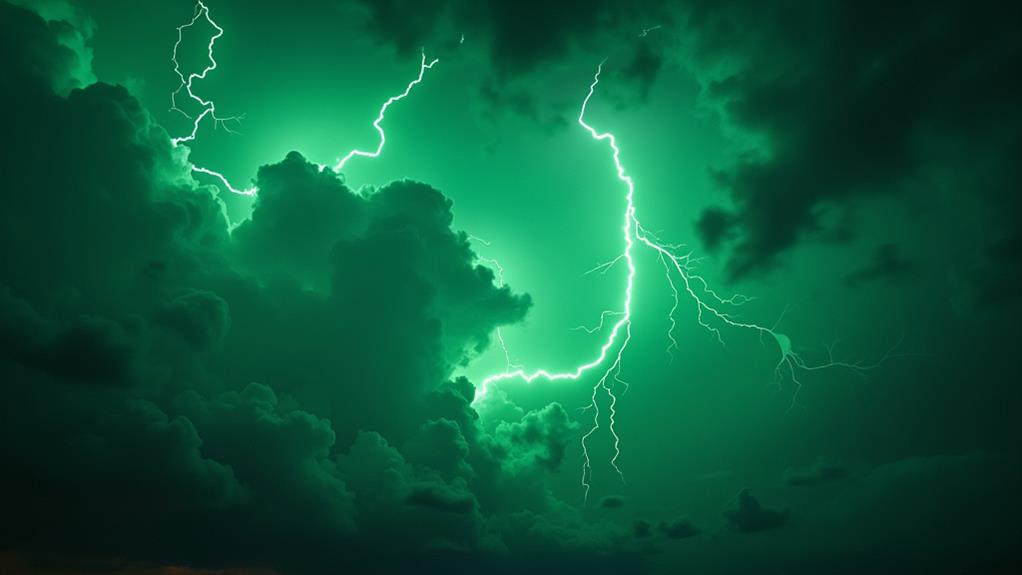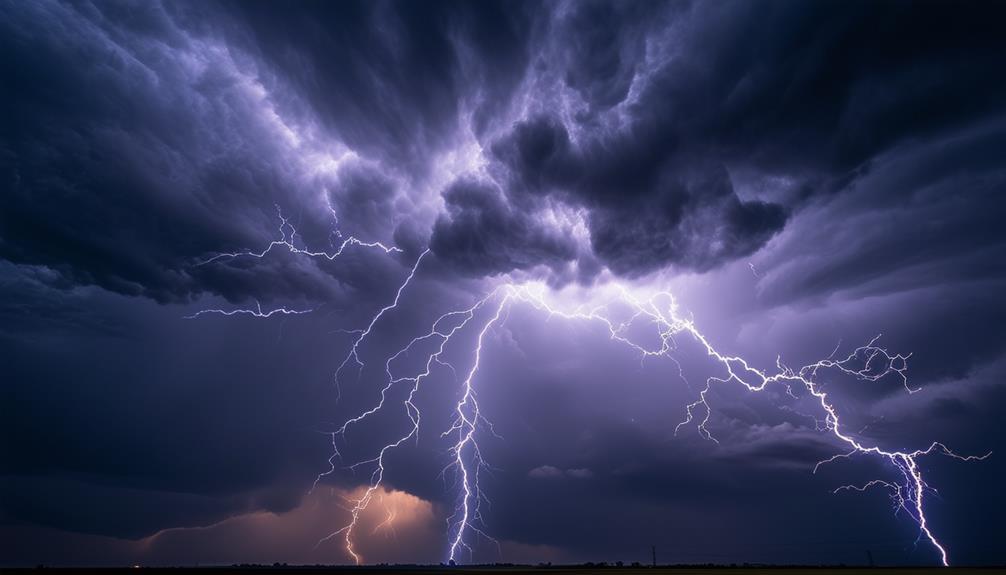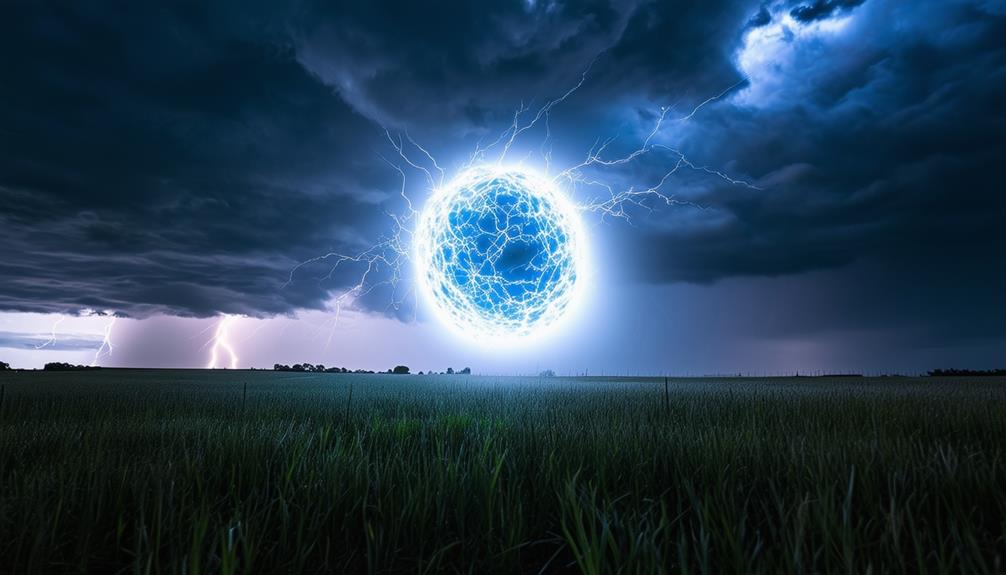Predicting Green Lightning: Can We Foresee This Spectacular Event?
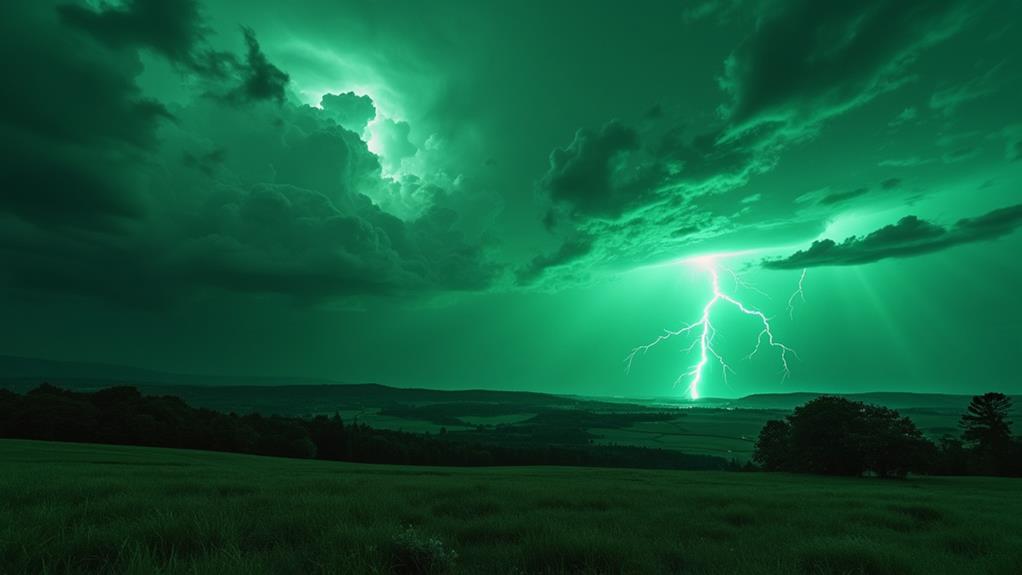
Can we predict green lightning, one of nature's most elusive and awe-inspiring phenomena? This rare event, often associated with volcanic eruptions, challenges meteorologists to refine their forecasting models. By studying the intricate conditions that produce green lightning—such as charged ice particles and electrical activity in storm clouds—scientists aim to make accurate predictions. Advanced techniques like 3D mapping and radio wave analysis offer promising insights. However, can these methods truly forewarn us of this spectacular occurrence? Let's explore the potential and limitations of predicting green lightning.
Understanding Green Lightning
Understanding green lightning begins with recognizing its rarity and the specific conditions under which it appears. This striking phenomenon is most commonly observed during volcanic eruptions, such as the Chaiten volcano in May 2008, where it was dramatically captured in photographs. Green lightning is produced by electrically excited oxygen atoms in the atmosphere, a process similar to what creates the green skies during aurora borealis displays.
Though green lightning can theoretically occur in all thunderstorms, it is rarely seen because it is often hidden within the storm clouds. The visibility of this rare spectacle depends on the cloud structure and the observer's vantage point. The phenomenon involves positive streamers that transfer current between positively and negatively charged regions.
Mechanisms of Lightning Formation
Lightning within a storm cloud begins with ice crystals colliding and merging, which causes them to acquire electrical charges. These collisions create regions of positive and negative charges, setting the stage for a powerful electrical surge. When these charged regions experience a rapid discharge of electricity, lightning strikes occur, producing the unmistakable flash we see in the sky.
Positively charged streamers within the clouds seek out negatively charged regions, and when they connect, a transfer of current happens. This process can lead to green lightning during volcanic eruptions. Volcanic ash clouds introduce additional electrical charges, interacting with the already charged particles in the atmosphere and enhancing the likelihood of this rare phenomenon.
The green hue observed during these lightning strikes results from the excitation of oxygen atoms in the atmosphere, similar to the process in auroras, where excited oxygen atoms emit light. Understanding these mechanisms is essential for predicting extraordinary lightning events, allowing us to anticipate and perhaps even foresee these awe-inspiring natural displays.
Coloration and Visibility
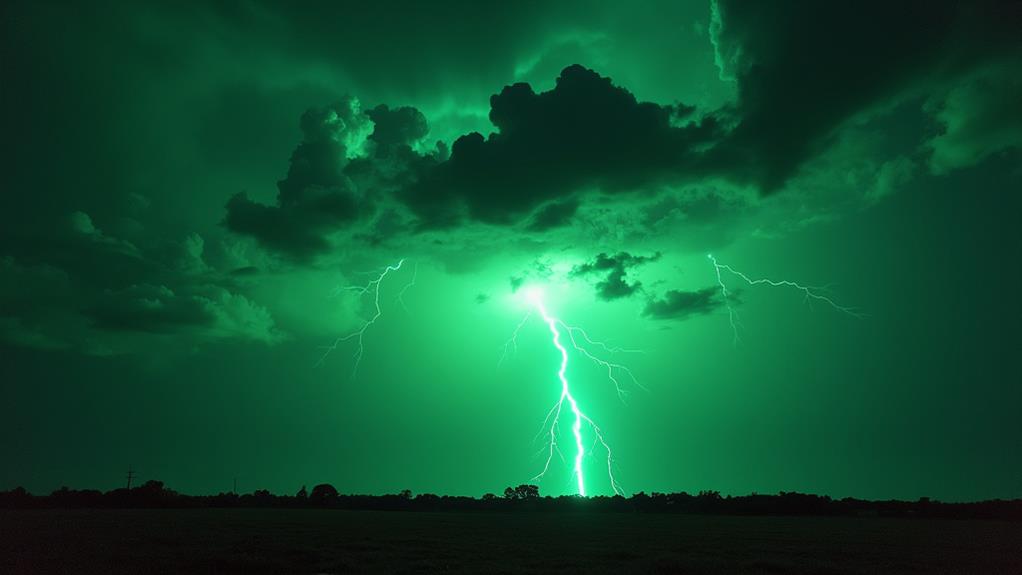
The green hue of green lightning, produced by electrically excited oxygen atoms, resembles the vivid colors seen in auroras. When lightning flashes, these oxygen atoms emit a greenish light, creating a spectacular yet rare sight. However, despite its striking appearance, green lightning is often hidden within storm clouds, making it difficult to observe. The cloud structure usually conceals it, even from seasoned storm chasers.
Interestingly, green lightning isn't exclusive to thunderstorms. It has been remarkably observed during volcanic eruptions. For instance, the Chaiten volcano in May 2008 provided the only photographed instance of this phenomenon. This unique event highlights how green lightning can appear in different atmospheric conditions, although it still remains largely unseen.
Green lightning is suspected to occur in all thunderstorms. Yet, its hidden nature within dense storm clouds means these lightning flashes mostly go unnoticed. Current research into the coloration mechanisms of atmospheric events, including green lightning, underscores the need for further exploration. Understanding these processes better could eventually lead us to predict and observe this elusive spectacle more reliably.
Implications for Storm Forecasting
Understanding the conditions that lead to green lightning could revolutionize storm forecasting. This rare phenomenon occurs when electrically excited oxygen atoms in the atmosphere emit a distinctive green hue, providing valuable insights into the atmospheric conditions during severe weather. Recognizing these conditions allows for more accurate predictions of lightning strikes.
Integrating this knowledge into existing weather models can significantly enhance the accuracy of storm forecasts. Identifying the potential for green lightning signals heightened electrical activity within storm clouds, enabling more precise warnings about severe weather. This gives communities more time to prepare and take necessary safety measures.
Studying hidden lightning occurrences, including green lightning, could also refine current lightning detection methods. This would enable meteorologists to deliver more accurate and timely forecasts, reducing the risks posed by unpredictable weather events. Advancing our understanding of green lightning not only predicts a rare event but also paves the way for improved storm forecasting and greater public safety.
Future Research Directions
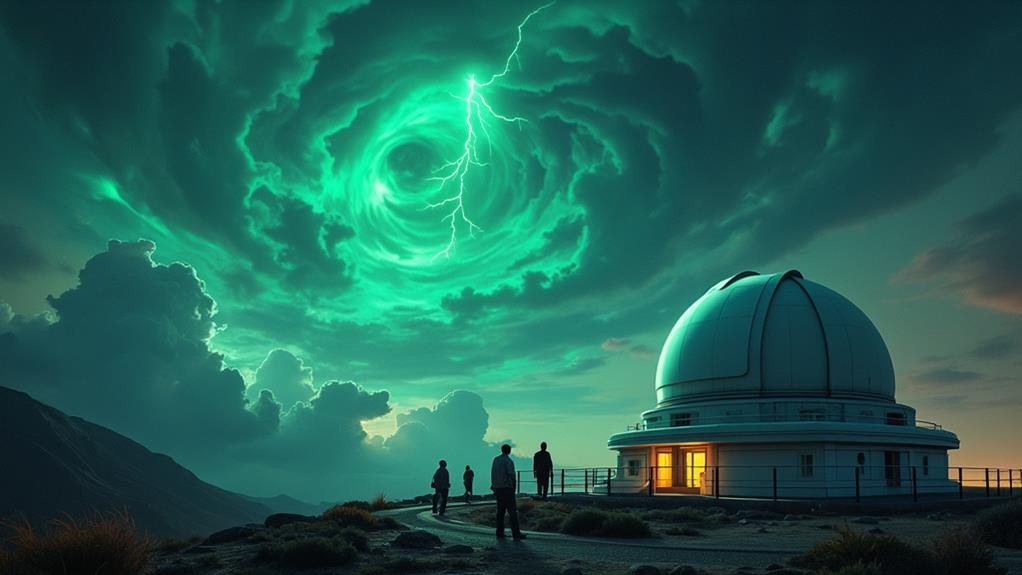
Future research directions are poised to revolutionize our understanding of green lightning by refining observational techniques within thunderstorms. Emphasis will be placed on advanced imaging technologies, such as three-dimensional mapping and radio telescopes, which are critical for capturing these rare phenomena. These tools will help identify the specific atmospheric conditions, including the role of charged ice particles, that lead to green lightning.
Researchers will also focus on using radio waves to probe the electrical activity within storm clouds. This will refine models that predict green lightning events, offering greater accuracy and potentially revealing previously undetected occurrences.
Here's a snapshot of the future research focus:
| Research Area | Key Technology/Method |
|---|---|
| Observational Techniques | 3D Mapping and Radio Telescopes |
| Atmospheric Conditions | Study of Charged Ice Particles |
| Electrical Activity | Using Radio Waves |
| Predictive Modeling | Improved Predictive Models |
Collaborative efforts within the scientific community will be essential. By pooling data and expertise, new insights into green lightning initiation processes will emerge. Ongoing examination of existing data and its correlation with other atmospheric phenomena could lead to groundbreaking advancements. With these future research directions, our understanding of green lightning will deepen, making this spectacular event more predictable.

